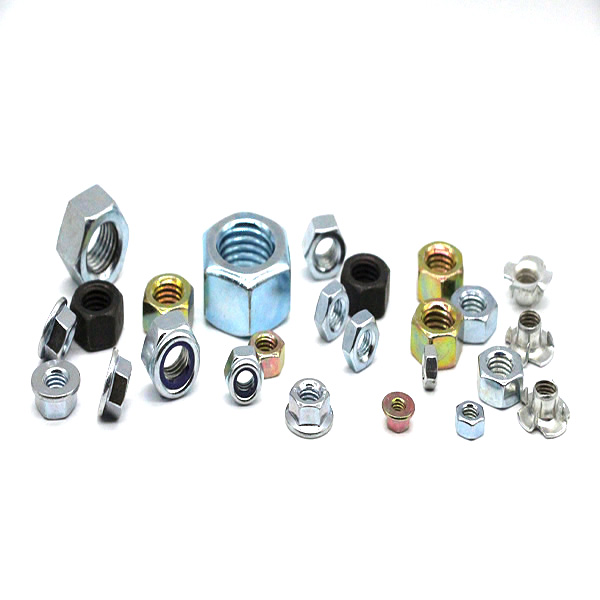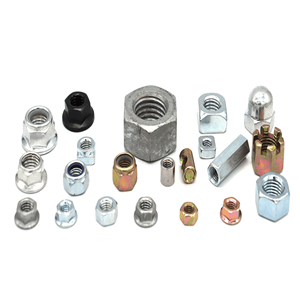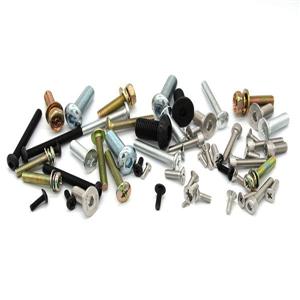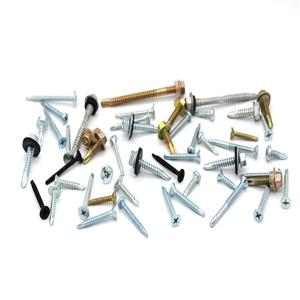The difference between fine thread nut and coarse nut
A fine thread nut is a common object used to connect two parts. In contrast to the fine thread nut, there is also a nut called a coarse nut. This coarse nut is used in the general case, or in the case where the fineness is not required, the coarse nut is used. It is required to have better fixing and sealing, and there is a time when the joint is rotated, that is, when the fine thread nut is used. So what is the difference between a fine thread nut and a coarse nut? Where are the fine thread nut nuts used? Let's take a look at it together.
The difference between fine thread nut and coarse nut
1. The pitch is different in size, the coarse pitch is large, and the fine teeth are small;
2. The screw angle of the fine thread nut is smaller, which is more conducive to the self-locking of the thread, so the fine teeth are generally used in places where anti-looseness is required.
3. The number of teeth of the same length of the coarse thread is small, the cross-sectional size of each tooth is larger, the force is good, and it is more suitable for bearing large tensile force and impact force.
4. The thread pitch of the fine thread nut is small, and the number of teeth screwed in is more on the same thread length, which can reduce the leakage of the fluid, so it is used in the case where sealing is required.
5. fine thread should also be a small pitch to play the role of fine-tuning.
6. The coarse-toothed bolt thread has stronger anti-fatigue ability, and it is convenient for frequent disassembly and assembly; the fine teeth have strong self-locking ability, large bottom diameter and strong static load capacity. In addition, the tightening torque of the fine teeth is smaller, and the steel grade has a certain relationship with the pre-tightening force. When the same pre-tightening force is used, the fine teeth are smaller.
7. Under normal circumstances, use coarse thread. When the structure is affected by the joint strength, the joint size is small and fine thread is used.
8. For the same size thread, the fine thread nut has a higher thread strength than the coarse tooth, as the M8 thread of 3.6 has a guaranteed load of 6590N, and the fine thread nut M8×1 thread has a guaranteed load of 7060N.
9. In the design of the pressure vessel, the thread of the fine thread nut is generally used on the second type of container, which is generally used to fix the internal components of the container, but is rarely used on the normally open parts such as the manhole. Coarse threading is widely used.
10. The self-locking property of the fine thread is higher than that of the coarse thread, the pre-tightening force is also larger, the temperature is higher, the vibration is larger, and the fine thread can be selected for the more important part, but it cannot be generalized. The specific one can be selected according to the actual situation. In practice, the fine thread should be reduced as much as possible, and the bolt diameter can be appropriately increased. The main reason is the problem of tolerances.
11. fine thread nut is used when the force is strong, but when the fine teeth are operated, it is necessary to remove the burrs in the buckle, otherwise it is easy to bite, the installation is inconvenient, the place to be used is determined, and some requirements are low. Use thick teeth as much as possible because of its low processing accuracy.

The place where the fine thread nut is used
1. Where pre-tightening is required, the self-locking property of the fine thread is higher than that of the coarse thread, and the pre-tightening force is also large.
2. In practice, try to reduce the fine thread, and increase the bolt diameter appropriately. The main reason is the problem of tolerances.
3. Where the precision is required, such as the thread on the seal.
4. the design is limited, such as requiring a compact structure.
5. as the tooling design transmission parts, can be used as a precision drive shaft with sealing requirements, with fine thread.
The above is about the difference between the fine thread nut and the rough tooth and the introduction of the place of use. I hope everyone can understand the difference between the fine thread nut and the coarse nut and the place where the fine thread nut is used.




